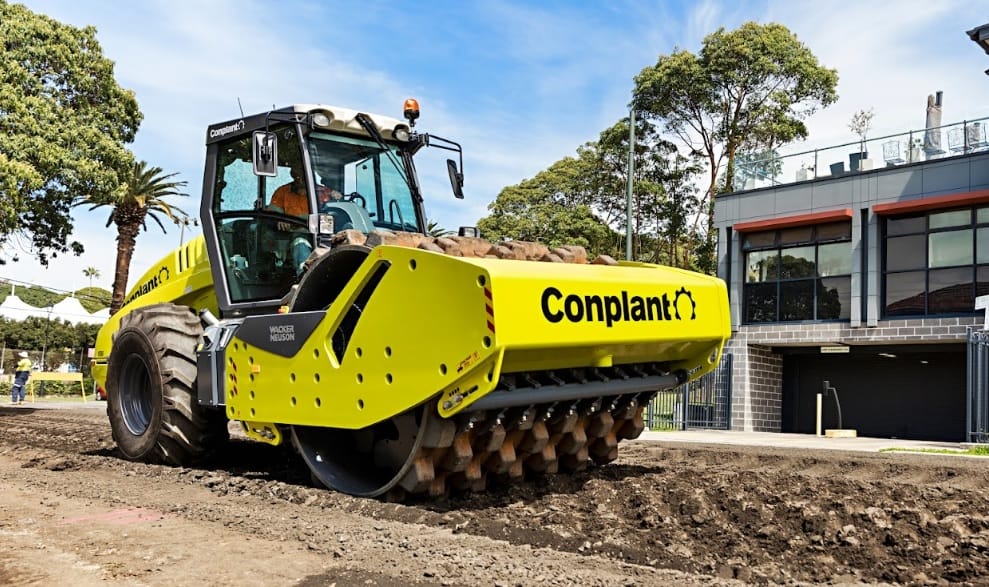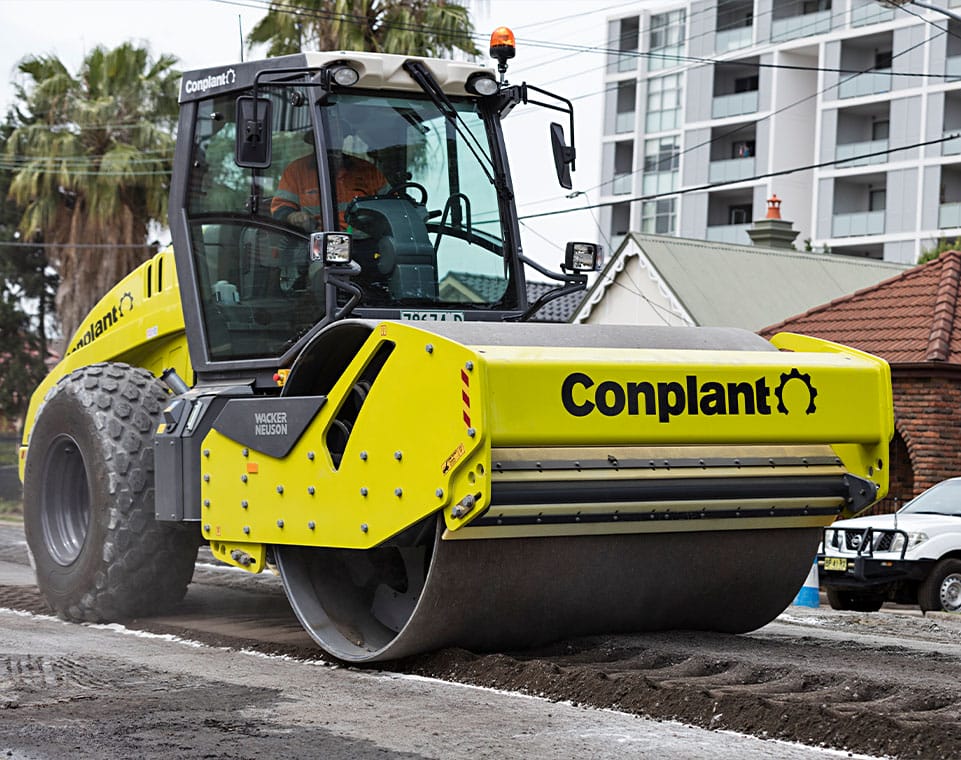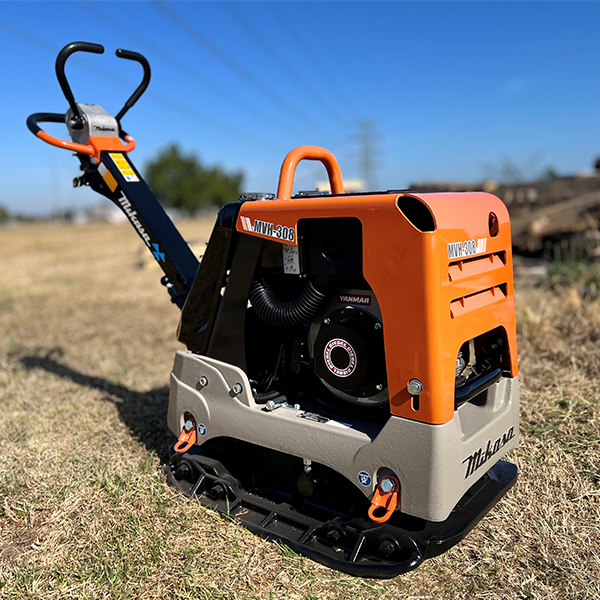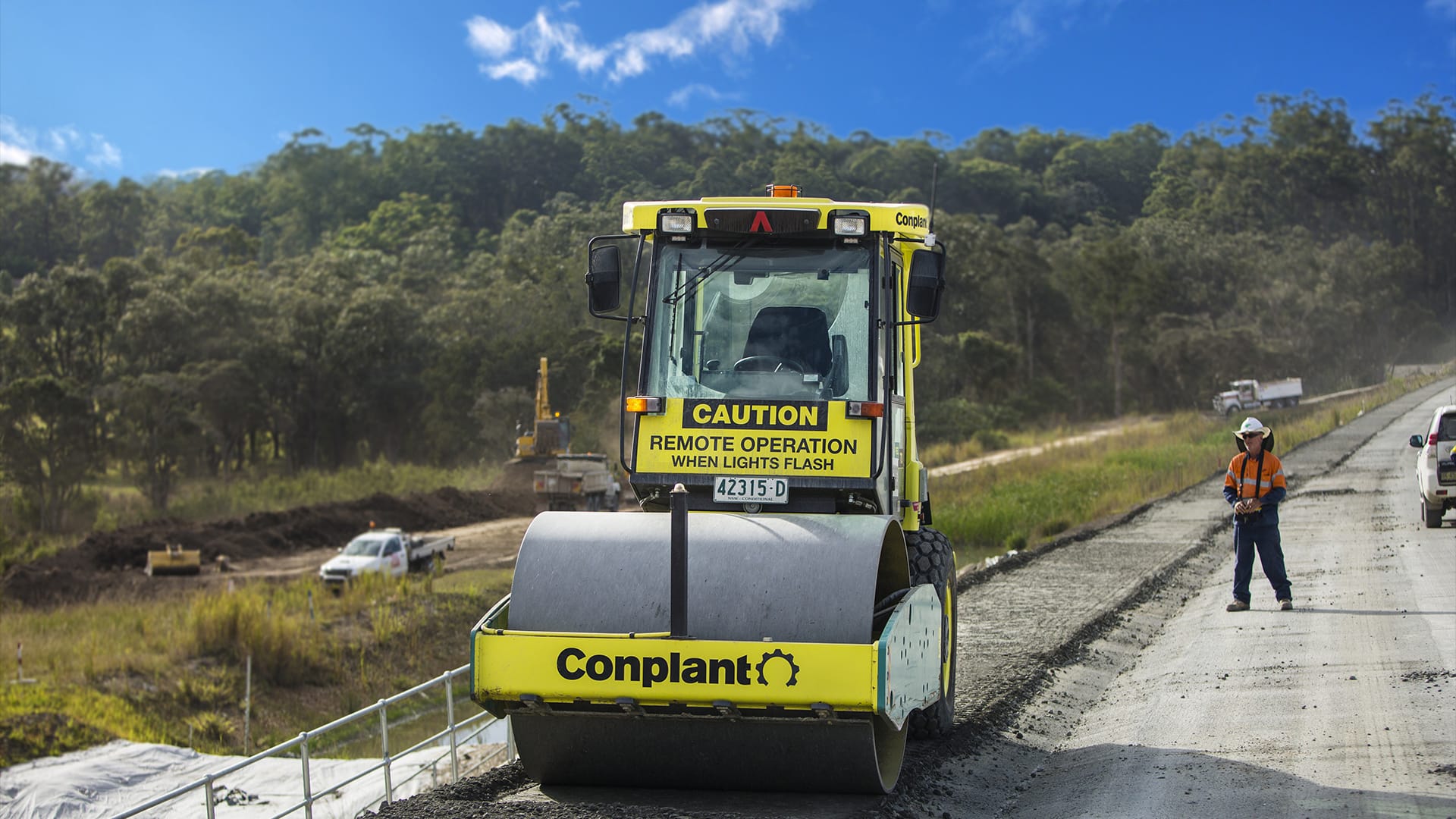What’s the Difference Between Heavy and Light Compaction?
Heavy versus light compaction: what’s the difference? No prizes for guessing the obvious distinction – heavy compaction equipment weighs more, the equipment is larger, and the pressure it exerts on the surface is greater than the lighter alternatives. Light compaction equipment, in contrast, is lighter and smaller, meaning that it exerts less pressure on the surface.
But what applications and environments are different compaction methods best suited for? That’s where it gets interesting.
The Basics of Compaction
The key purpose of compaction equipment is to increase safety and stability on the site. Compacting the surface – applying deep downward pressure – fills any air pockets in the soil. The compacted area can then support heavy equipment, structures or machines without loose soil giving way and destabilising the ground.
Heavy Compaction?
Heavy compaction uses heavy, powerful machinery to compress and densify materials such as soil, gravel, or asphalt. Heavy compaction equipment is chosen for jobs that require extreme load-bearing capacity and stability. Think road construction, large industrial facilities, mining sites or airports.

Equipment for Heavy Compaction
Vibratory rollers – Vibratory rollers use oscillating drums that penetrate deep into the ground while the roller flattens and compacts the surface.
Padfoot rollers – Padfoot rollers have a drum equipped with cylindrical or rectangular pads. These pads exert more concentrated force and are best suited for compacting cohesive and semi-cohesive soil. They’re often used in earthworks and road construction or rehabilitation.
Multi-tyre rollers – Multi-tyre rollers, also known as pneumatic-tyred rollers, use rubber tyres to knead the soil providing a great finish on granular material like bases, sub-bases and asphalt.
Tandem smooth drum rollers – Tandem rollers are comprised of two smooth drums that work together to provide additional compaction and surface smoothing. They are versatile and suitable for both asphalt and soil compaction tasks, making them a popular choice for road construction.
Looking for heavy rollers that pack a punch? Check out our range of Wacker Neuson RC Smooth Drum Rollers

Techniques for Heavy Compaction
As touched on above, there are three primary techniques used in heavy compaction: Static Rolling, Vibratory Compaction, and Kneading.
Static rolling – Static rolling involves simply using the weight of the compactor itself to compress the soil. This is an effective method for consolidating soil layers and providing foundational support. Static rollers are typically used near residential areas, buildings or bridges, where vibrations or heavy impact would potentially be hazardous.
Vibration compaction – Vibratory rollers such as sheepsfoot rollers use vibration to tighten the soil before rolling over it to achieve deep compaction.
Kneading compaction – Multi-tyre rollers use kneading to tighten the soil, removing air pockets and allowing it to be smoothed and flattened with the roller.
For optimal success in heavy compaction projects, the material type, composition and moisture content all need to be assessed. They will impact the results and may influence which machine is best. Additionally, if the surface is going to be lifted, each layer needs proper compacting before the next one is added.
Light Compaction
Light compaction is used for tasks with relatively low-density requirements. It’s ideal for granular soils, asphalt, and small construction projects, such as residential developments, landscaping or smaller road repairs. These machines operate on similar principles to heavy compaction machines, but thanks to their smaller size and weight, they’re more manoeuvrable and don’t tend to require expert operators.

Equipment for Light Compaction
The use of light compactors can be quite broad, and as such, there’s a wider variety of machines to fit different jobs. These are generally smaller and often hand-operated, in contrast to heavy rollers which must be driven or remotely operated.
Plate compactors – Plate compactors are hand-operated, used to compact granular soils and asphalt, using a heavy flat plate to generate a vibratory downward force.
Rammers – Rammers, also known as jumping jacks or trench compactors, are handheld compactors with a small foot that delivers high-impact force through rapid jumping motions.
Walk-behind rollers – Walk-behind rollers are manoeuvrable and effective in compacting small areas, such as driveways or trenches. Ideal for compacting asphalt layers.
Small vibratory compactors – Small vibratory compactors operate like heavy vibratory compactors, compacting the surface through vibrations, only smaller and more manoeuvrable.
Looking to buy new compaction equipment? See our full range.

Techniques for Light Compaction
The techniques used by light compaction equipment vary slightly from heavy compaction. Light compaction techniques include Impact Compaction, Vibration Compaction, and Kneading.
Impact compaction – Plate compactors and rammers are excellent examples of impact compaction, using precise, forceful thumps to compact the surface – applying intense downward pressure through the plate.
Vibration compaction – Vibratory compactors, both light and heavy, use vibrations to loosen and tighten the surface materials.
Kneading compaction – Walk-behind rollers use the same technique as the heavy multi-tire roller to knead and compact the soil.
As with heavy compactors, the moisture of the ground material – if it’s excessively dry or wet – can hinder compaction. Even distribution of compaction is also essential to create uniform density of the site.
What to Consider When Choosing Compaction Equipment
Deciding between heavy vs light compaction equipment depends on your site materials, access, and outcomes you’re aiming for. If you understand the soil type, load-bearing needs and constraints of the surrounding area, you’ll have a much clearer idea of what you need. In some cases, it may be a combination of both heavy and light equipment.
Aspect | Heavy Compaction | Light Compaction |
Type of Material | Cohesive soils, larger construction projects | Granular soils, asphalt, smaller-scale projects |
Load-Bearing Needs | High structural integrity, load-bearing capacity | Lower density requirements |
Ideal Applications | Highways, industrial facilities | Residential developments, landscaping |
Project Constraints | More space, higher budget, environmental impact | Limited space, budget constraints |
Project Considerations | Durability, stability, cost-effectiveness | Durability, stability, cost-effectiveness |
The Importance of Proper Compaction Testing
Testing is a quality control precaution for both light and heavy compaction projects. It offers an assessment of the results the equipment can guarantee. Testing helps to glean essential insights into the equipment’s effects based on the material’s density and moisture. These insights can help to inform time and budget requirements.
Conclusion
Compaction is indispensable in all types of construction projects – from small residential, to larger commercial and industrial sites. Heavy compaction, with its powerful machinery, is the go-to for all demanding, high-load-bearing projects, while light compaction offers flexibility and agility for smaller projects.
Choosing the right equipment that utilises the right techniques is achieving the best results in the most efficient, cost-effective, and safest way.
Need a hand choosing the right equipment for your next job? Get in touch.



